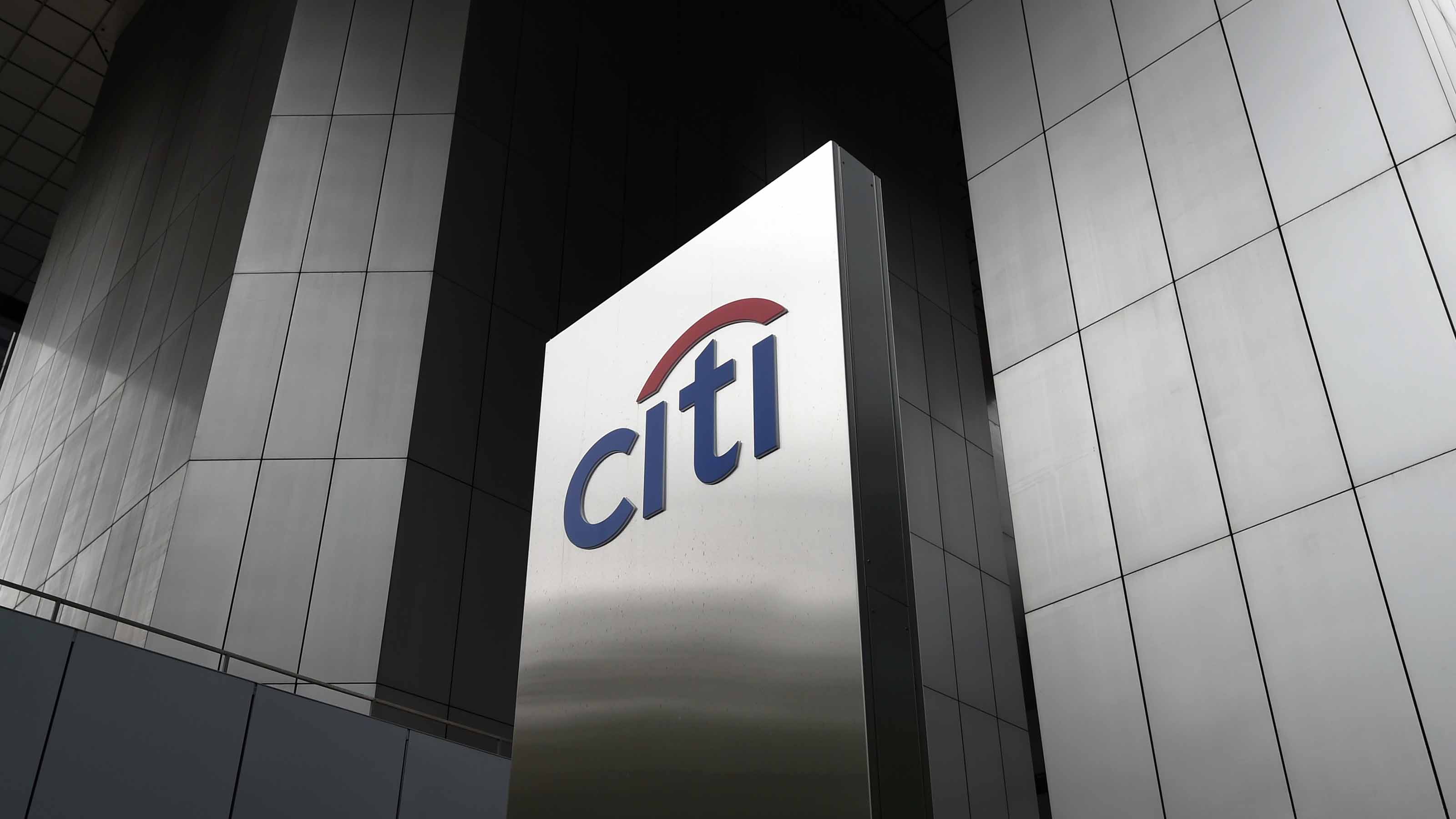Citigroup, Wells Fargo and JPMorgan Climb. Is It Time To Buy Bank Stocks Now?
Bank stocks C, WFC and JPM are all up after earnings, pointing to strength in the beaten-down sector.


If better-than-expected quarterly results from three of the nation's biggest financial firms are any indication, there might be bargains lurking among bank stocks.
JPMorgan Chase (JPM, $112.92), Wells Fargo (WFC, $43.89) and Citigroup (C, $43.55) marked the unofficial opening of the third-quarter earnings season on Friday, and they did so on an upbeat note.
Indeed, all three big banks exceeded Wall Street's earnings per share estimates, and by wide margins at that.
From just $107.88 $24.99 for Kiplinger Personal Finance
Become a smarter, better informed investor. Subscribe from just $107.88 $24.99, plus get up to 4 Special Issues

Sign up for Kiplinger’s Free Newsletters
Profit and prosper with the best of expert advice on investing, taxes, retirement, personal finance and more - straight to your e-mail.
Profit and prosper with the best of expert advice - straight to your e-mail.
Shares in the three lenders rose sharply on the news, even as the broader market sold off. True, the market pretty much always overreacts – both to the upside and downside – in the immediate aftermath of a news event such as earnings.
But the buoyancy exhibited by JPM, WFC and C after their respective earnings reports might just mean that bank stocks have been beaten down beyond reason heading into what is widely expected to be a brutal third-quarter earnings season.
JPM's Bottom Line Beats the Street
JPM, a component of the Dow Jones Industrial Average and nation's biggest bank by assets, reported a less-than-feared 17% drop in third-quarter profit on Friday, as a jump in interest income cushioned a blow from higher loan loss provisions and a slump in dealmaking due to a worsening economic outlook.
Typically, rising interest rates are good for banks because they can charge consumers more, but the broader risk of an economic slowdown and higher cost of borrowing could cloud the economic outlook and hurt future earnings.
Chief Executive Jamie Dimon said in a statement that American consumers continue to spend and businesses remain healthy.
However, he added there were "significant headwinds immediately in front of us," noting stubbornly high inflation leading to higher global interest rates, the uncertain impacts of quantitative tightening, the war in Ukraine and the fragile state of oil supply and prices.
"While we are hoping for the best, we always remain vigilant and are prepared for bad outcomes."
For the quarter, JPMorgan's profit fell to $9.74 billion, or $3.12 per share. Revenue rose 10% to $32.72 billion, helped by a 22% increase in revenue from fixed income trading.
The bank's adjusted profit was $3.36 per share, well above analysts' average estimate of $2.88, according to Refinitiv data.
Credit Suisse analyst Susan Roth Katzke said "simply put, JPMorgan delivered a solid set of results, from top to bottom."
Citigroup and Wells Fargo Also Join the Beat Parade
Citigroup, the nation's third-largest lender by assets, reported net profit of $3.5 billion, or $1.63 per share, in the three months ended Sept. 30. Analysts on average had expected a profit of $1.42 per share.
True, the bank reported a 25% year-over-year drop in third-quarter profit, hurt by having to set aside more funds to cover soured loans from a potential economic downturn and a slump in investment banking business. However, signs abound that Citigroup's turnaround efforts are beginning to bear fruit.
Meanwhile, analysts were also too pessimistic about Wells Fargo. The nation's fourth-largest bank reported a 31% decline in third-quarter profit, hurt by costs related to a fake accounts scandal and higher loan-loss reserves.
Yet, like its fellow bank stocks, WFC beat estimates. On an adjusted basis, the lender earned $1.30 per share, or far more than the Street's forecast for $1.09 per share.
Of these three bank stocks, only WFC is beating the broader market so far this year. Shares in Wells Fargo were off almost 12% for the year-to-date through Oct. 13. JPM and C were down 31% and 29%, respectively, over that span, while the S&P 500 was off 23%.
Meanwhile, Buy Calls Abound on the Street
Anytime a stock sells off that hard, bulls can usually point to valuation as a reason to be constructive on a name. Happily for bulls, these banks' quarterly reports make such arguments even more convincing.
And not for nothing, but industry analysts were already collectively optimistic about these three bank stocks at their current levels.
JPM carried a consensus recommendation of Buy heading into its third-quarter earnings report, albeit with somewhat mixed conviction. Of the 26 analysts issuing opinions on the stock tracked by S&P Global Market Intelligence, 10 rated it at Strong Buy, six said Buy, nine had it at Hold and one called it a Strong Sell.
Citigroup also scored a consensus Buy recommendation, with seven Strong Buy calls, two Buys, 14 Holds and one Strong Sell.
WFC, meanwhile, sported a consensus recommendation of Buy with high conviction. Of the 26 analysts issuing opinions on the stock tracked by S&P Global Market Intelligence, 12 called it a Strong Buy, nine said Buy and five called it a Hold.
And make no mistake, we're already seeing some analyst upgrades on these bank stocks roll in. CFRA Research upgraded WFC to Hold from Sell on Friday thanks to the bank's third-quarter results.
The Bottom Line
If there was a sliver of a silver lining to be found heading into what is forecast to be the worst earnings season since the height of the COVID-19 pandemic, it was this: Analysts' estimates were so low that companies should be able to trip over them.
If nothing else, results from JPM, C and WFC accomplished exactly that – at least as far as bank stocks are concerned.
Reuters reporters Mehnaz Yasmin, Lananh Nguyen, Niket Nishant and Noor Zainab Hussain contributed to this article.
Profit and prosper with the best of Kiplinger's advice on investing, taxes, retirement, personal finance and much more. Delivered daily. Enter your email in the box and click Sign Me Up.

Dan Burrows is Kiplinger's senior investing writer, having joined the publication full time in 2016.
A long-time financial journalist, Dan is a veteran of MarketWatch, CBS MoneyWatch, SmartMoney, InvestorPlace, DailyFinance and other tier 1 national publications. He has written for The Wall Street Journal, Bloomberg and Consumer Reports and his stories have appeared in the New York Daily News, the San Jose Mercury News and Investor's Business Daily, among many other outlets. As a senior writer at AOL's DailyFinance, Dan reported market news from the floor of the New York Stock Exchange.
Once upon a time – before his days as a financial reporter and assistant financial editor at legendary fashion trade paper Women's Wear Daily – Dan worked for Spy magazine, scribbled away at Time Inc. and contributed to Maxim magazine back when lad mags were a thing. He's also written for Esquire magazine's Dubious Achievements Awards.
In his current role at Kiplinger, Dan writes about markets and macroeconomics.
Dan holds a bachelor's degree from Oberlin College and a master's degree from Columbia University.
Disclosure: Dan does not trade individual stocks or securities. He is eternally long the U.S equity market, primarily through tax-advantaged accounts.
-
 Dow, S&P 500 Rise to New Closing Highs: Stock Market Today
Dow, S&P 500 Rise to New Closing Highs: Stock Market TodayWill President Donald Trump match his Monroe Doctrine gambit with a new Marshall Plan for Venezuela?
-
 States That Tax Social Security Benefits in 2026
States That Tax Social Security Benefits in 2026Retirement Tax Not all retirees who live in states that tax Social Security benefits have to pay state income taxes. Will your benefits be taxed?
-
 QUIZ: What Type Of Retirement Spender Are You?
QUIZ: What Type Of Retirement Spender Are You?Quiz What is your retirement spending style? Find out with this quick quiz.
-
 Dow Rises 497 Points on December Rate Cut: Stock Market Today
Dow Rises 497 Points on December Rate Cut: Stock Market TodayThe basic questions for market participants and policymakers remain the same after a widely expected Fed rate cut.
-
 JPMorgan's Drop Drags on the Dow: Stock Market Today
JPMorgan's Drop Drags on the Dow: Stock Market TodaySmall-cap stocks outperformed Tuesday on expectations that the Fed will cut interest rates on Wednesday.
-
 Crypto Trends to Watch in 2026
Crypto Trends to Watch in 2026Cryptocurrency is still less than 20 years old, but it remains a fast-moving (and also maturing) market. Here are the crypto trends to watch for in 2026.
-
 Dow Adds 516 Points on Broad Optimism: Stock Market Today
Dow Adds 516 Points on Broad Optimism: Stock Market TodayEasing trade war tensions and promise from early earnings reports has investors looking on the bright side to start the week.
-
 Stocks Swing in Volatile Session: Stock Market Today
Stocks Swing in Volatile Session: Stock Market TodayThe main indexes fell sharply in early trading on rising China tensions, but rebounded thanks to encouraging bank earnings.
-
 Dow Adds 587 Points as Stocks Bounce: Stock Market Today
Dow Adds 587 Points as Stocks Bounce: Stock Market TodayThe main indexes rebounded sharply Monday after President Trump took a calmer stance toward China.
-
 The Best Bank Stocks to Buy
The Best Bank Stocks to BuyBank stocks are part of the financial services sector and are a way to gain exposure to the broader economy. Here, we look at how you can find the best ones.
-
 What Tariffs Mean for Your Sector Exposure
What Tariffs Mean for Your Sector ExposureNew, higher and changing tariffs will ripple through the economy and into share prices for many quarters to come.